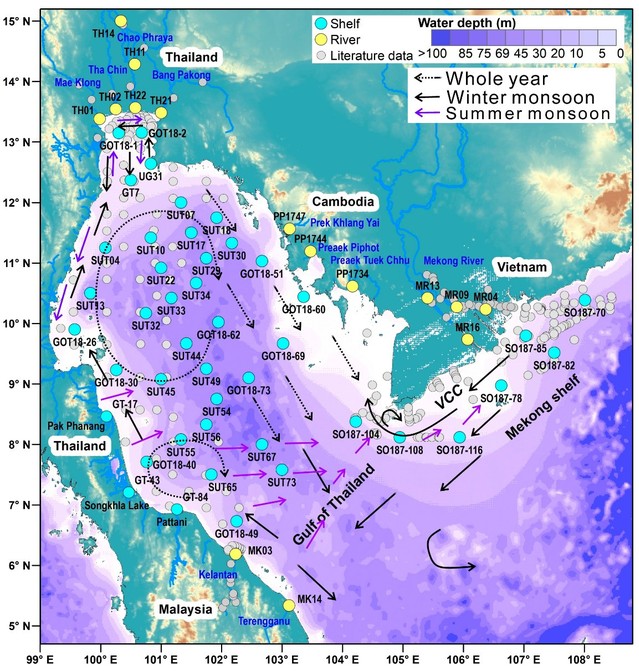Baozhi Lin a1, Zhifei Liu a1, Meixun Zhao b1, Penjai Sompongchaiyakulc, Hailong Zhangb, Thomas M. Blattmannd, Shuo Fenga, Martin G. Wiesneref, Khanh Phon Le g, Rithy Meas h, Edlic Sathiamurthy i
a State Key Laboratory of Marine Geology, Tongji University, Shanghai 200092, China
b Frontiers Science Center for Deep Ocean Multispheres and Earth System, Key Laboratory of Marine Chemistry Theory and Technology, Ministry of Education, Ocean University of China, Qingdao 266100, China
c Department of Marine Science, Faculty of Science, Chulalongkorn University, Bangkok 10330, Thailand
d Geological Institute, Department of Earth Sciences, ETH Zürich, Zürich 8092, Switzerland
e Key Laboratory of Marine Ecosystem Dynamics, Second Institute of Oceanography, Ministry of Natural Resources, Hangzhou 310005, China
f Institute of Geology, University of Hamburg, Hamburg 20146, Germany
g Faculty of Petroleum, Hanoi University of Mining and Geology, Hanoi 11910, Viet Nam
h Department of Coastal Zone and Marine Conservation, Ministry of Environment, Phnom Penh 12301, Cambodia
I Faculty of Science and Marine Environment, University Malaysia Terengganu, Kuala Nerus 21030, Malaysia
Abstract
The deposition of fluvially derived terrestrial organic carbon (OC) together with marine OC in marine sediments has important implications for the global carbon cycle. However, dispersal extent and fates of terrestrial soil and petrogenic OC on the continental shelf have remained unclear and debated. Here, we present OC compositions and mineral properties of marine sediments from the Gulf of Thailand and the adjacent Mekong shelf, as well as river sediments from continents surrounding them in order to determine the provenance of sedimentary OC in this tropical epicontinental sea. We find that stable carbon isotope composition (δ13C) and radiocarbon activity (Δ14C) of sedimentary OC fall between those of marine OC and of river sediments, mainly composed of C3 plant-dominated pre-aged soil and petrogenic OC. Mixing model reveals that the OC in river sediments is predominantly sourced from pre-aged deep soils, accounting for 73 ± 5%, with the remaining consisting of modern surface soil (25 ± 6%) and bedrock (2 ± 1%). The sedimentary OC on the shelf is primarily derived from marine OC, accounting for 65 ± 15%, with terrestrial soil OC and petrogenic OC contributing 24 ± 14% and 10 ± 5%, respectively. The sources, degradation, and aging of OC and mineral surface area determine the spatial pattern of sedimentary OC compositions in the Gulf of Thailand and the Mekong shelf. The contents of marine, soil, and petrogenic OC decrease with increasing distance offshore, consistent with changes in spatial patterns of sedimentation rate of terrestrial materials and of marine primary production in the overlying water column. Extensive degradation of terrestrial OC and extremely low OC burial rate in this tropical epicontinental sea suggest a minor role on OC sequestration in marine sediments, but an important CO2 source to the atmosphere in the context of the global carbon cycle.
Full Airticle:https://doi.org/10.1016/j.gca.2023.04.030



